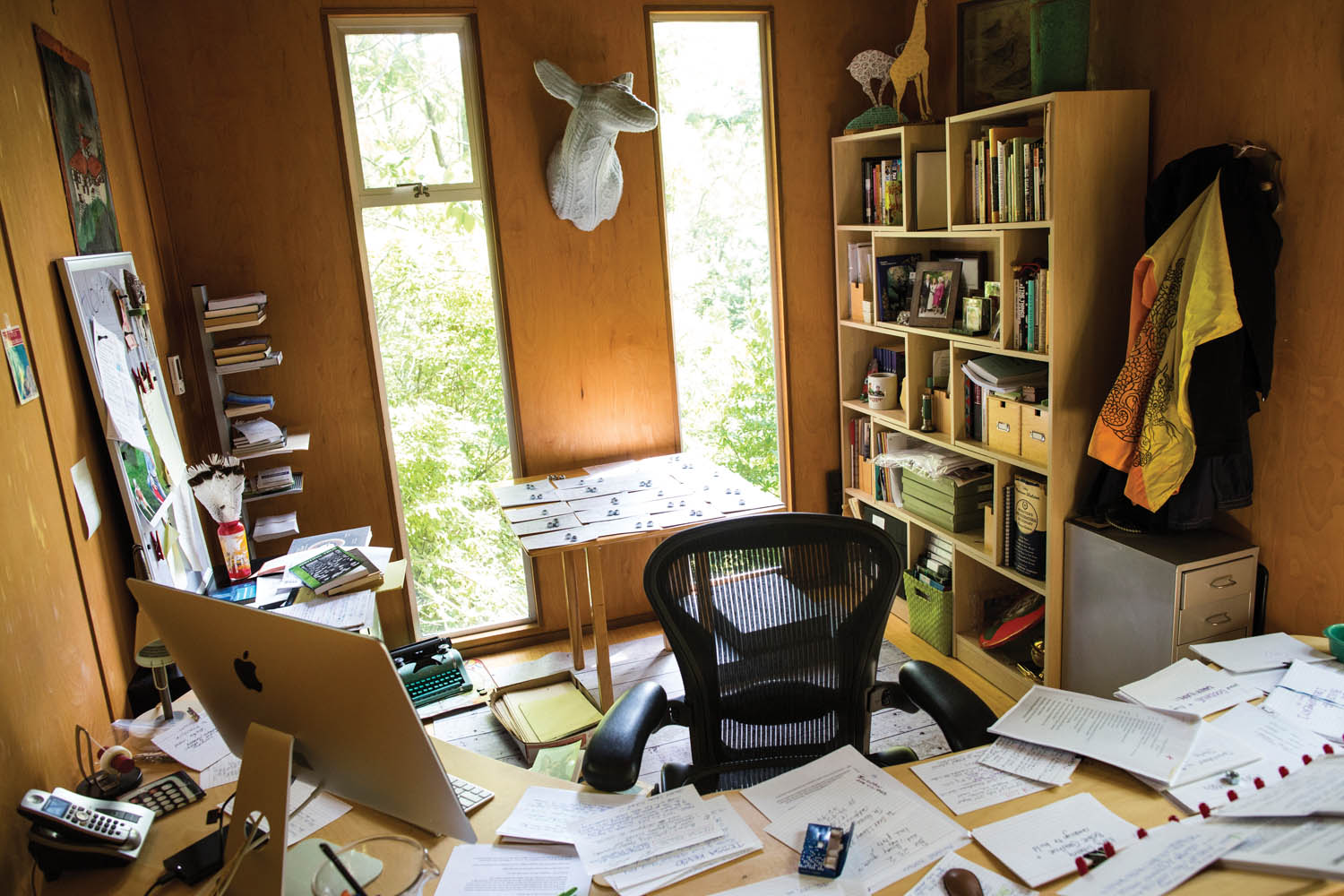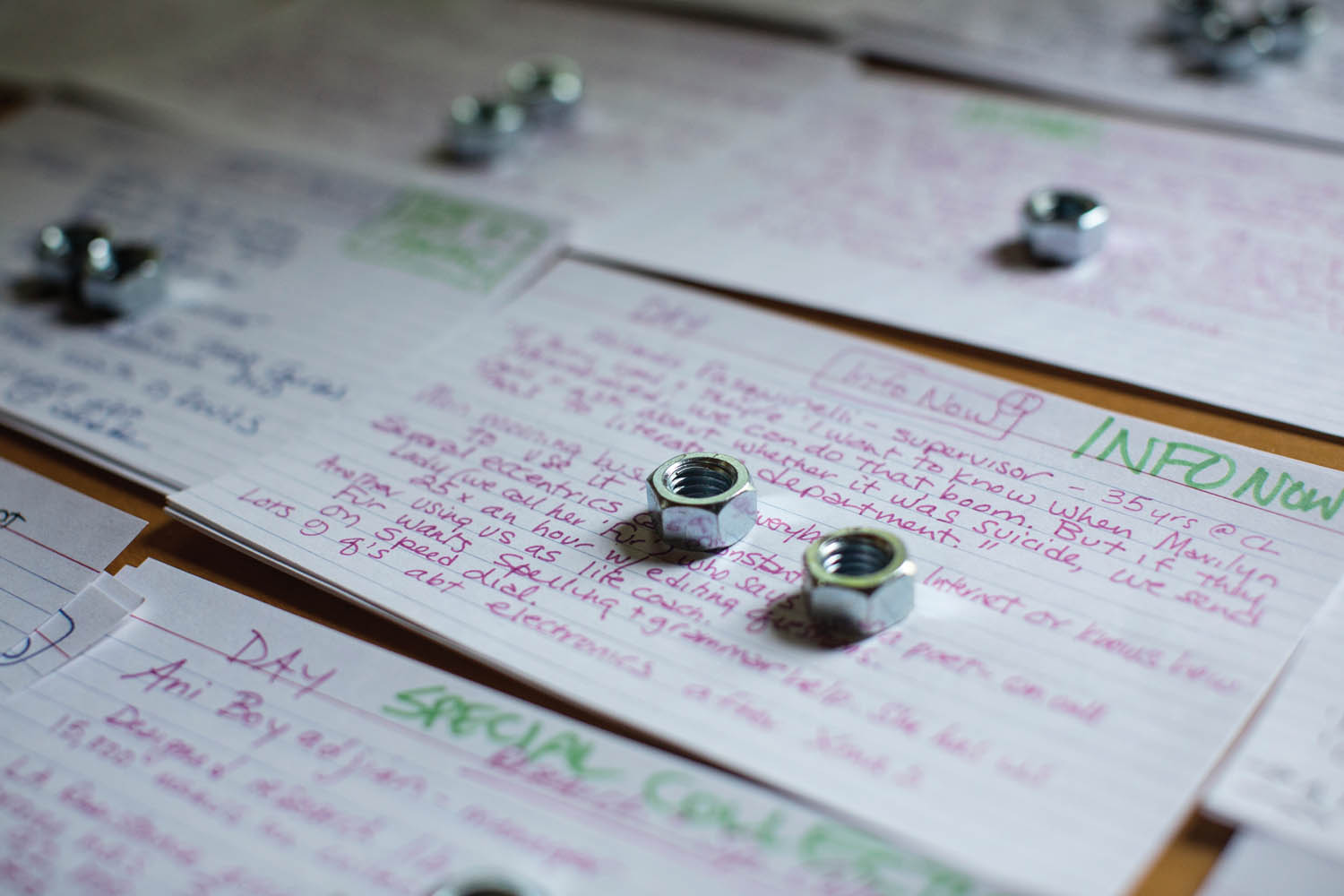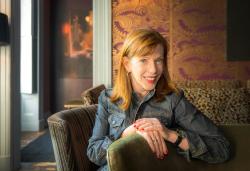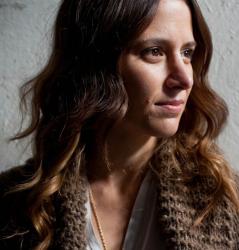Books have never had it easy. Even their sanctuaries are vulnerable. Setting aside natural disasters, libraries—a depressing number of them—have succumbed to all kinds of destruction throughout history: most of it intentional, some of it accidental, and almost always involving fire.
For three years, Susan Orlean has been steeped in this particular bibliophilic tragedy, coming to it by way of her book-in-progress on the 1986 arson of the Los Angeles Public Library, the largest library fire in American history (400,000 items destroyed, including books, historic maps, drawings for patents, fine art, film negatives, and the like).
The story of a big fire was almost too easy to tell; for Orlean, a deeper attraction lay in the biography of the place that survived it. “I’m always drawn to stories that operate partly at the level of being familiar to a fault, something that seems unable to sustain a great deal of examination. That’s what makes it interesting to me. It is awfully challenging to take a subject that people initially might think of as boring and convince them that, actually, it’s really interesting. That seems to be my perverse tendency.”
A library, of course, makes for a stubborn protagonist in a work of narrative journalism. “The reality is, it’s just different writing about something that has all of the complexity of bureaucracy. I don’t do a lot of stories where I have to go through channels to get the material I want, and I’m not somebody who knows how to game a system to get access to stuff.” Doggedness helped, both in chasing leads and, later, arranging them—fittingly, with one of the indispensible tools of the librarian’s trade.
Orlean says that when she sat down to write The Orchid Thief, her book about anthomaniac John Laroche, and was confronted by the volume of her notes, “it was like my head blew up.” But she’d read about John McPhee’s taxonomic method of using index cards, and decided to give it a shot. “This was the answer to many of my woes—the index card. A giant part of the writing process is to figure out how to keep material manageable: How do you find things? Structure is maybe the single most important and challenging part of writing a book. So any mechanical way you can help yourself is really important.”
Where ideas belong; where to find them when you need them. The method here isn’t so far removed from the beneficent principles of the library itself. “In a way,” Orlean adds, “the hero here is this amazing legacy of human civilization choosing to preserve the process of our thoughts. Sure, you could say it’s just a place with a lot of books, but people feel tremendous emotions about libraries, about the goodness of them as institutions. And that’s the heroic part of this—that somehow we have this impulse to keep creating these places that preserve for everyone the stories that we’ve made.”
— VQR

Outtakes & Influences
VQR: The Library Book is an investigation not only of this particular crime but also the lens through which you look at our relationship to libraries and their role in the community. And at first blush, one wouldn’t necessarily assume there’s much drama in a story about libraries. I wonder what you saw in this particular subject that made you realize there’s a compelling story to tell.
Susan Orlean: The arson was the largest library fire in the history of the United States. It was also, until very recently, the largest structural fire in Los Angeles. So it was a very big crime that felt, at least to me, like it had never been looked at closely enough. Obviously, there was a lot of newspaper coverage, but that was mostly in Los Angeles rather than anywhere else. The combination was irresistible: a subject that your first reaction would be, What is there to say about libraries? We all know what they are, coupled with the fact that there was a major event in the life cycle of this particular library that gives an interesting arc to the story.
When did you first learn about the fire?
Right after I moved to L.A.—around 2011. Like many visitors, I had barely been to downtown Los Angeles, let alone the library. I was being given a tour by the head of the Library Foundation, and he mentioned the fire very casually, because for him and the rest of the staff at the library, of course, the fire was common knowledge. He just assumed I knew about it, saying, “Well, you know, the fire.” And I said, “The fire? What are you talking about?” Before he mentioned it, I had been thinking how interesting it would be to write about a library; I had been thinking to myself, Wow, I love stories about how places like this function. But I kind of waved it off, because my second thought had been, How could this possibly be an exciting story? Then, with his mention of the fire, the whole thing kind of fell together.
Being the largest library fire in American history implies that it isn’t the only one.
Oh, no. My gosh.
Both accidental and intentional.
Lots of both. Libraries have a tendency to go up in flames for the obvious reason: They’re filled with flammable things, and electrical shorts happen and accidental fires start because a coffee pot overheats or someone drops a match in a book return. But they’ve also been the focus since the beginning of time of intentional fires as well.
It’s fascinating to think that over the course of history these institutions have been prized targets, especially in military campaigns. It sounds like you’re talking about the fact that they’re as valuable as arsenals.
Right. And they’re symbolic. You would be shocked at how many books in the history of human civilization have ended up going up in flames. It is really staggering. And, as you say, it’s been a combination of everything from vandalism with political motivation to a pyromaniac lighting something on fire that they know is going to burn. The number of libraries that have been destroyed in war! Right now I’m totaling up the number of books lost in World War II and you would just faint if you heard the number because it’s so gigantic. It’s almost unimaginable—just millions and millions and millions of books that were destroyed in bombings and deliberate attacks on libraries.
 Let’s talk a bit about what Maisie Crow shot in your studio. The notecards—I’m assuming there is a system indicated by the number of nuts weighing down each card?
Let’s talk a bit about what Maisie Crow shot in your studio. The notecards—I’m assuming there is a system indicated by the number of nuts weighing down each card?
Actually, the number of nuts just indicates how likely I thought the card was to blow off my desk! I’ve always used notecards to help organize and structure when I’m working on a book, and I thought I needed something to keep them from getting knocked or blown around that didn’t obscure a lot of the card but was kind of heavy. It had to be cheap because I knew that I needed a lot of them; it couldn’t be some fancy paperweight. I don’t know how I came up with the idea. I think I was wandering around a hardware store and saw these big metal nuts and bolts and I thought, Oh! These nuts are a few cents apiece, and they’re pretty heavy. These are actually the same nuts that I used when I was working on my last book, Rin Tin Tin, so they’re now like legacy tools.
There’s a wonderful, comfortable chaos of papers in the images. But then there’s the fastidious taxonomy of the notecards themselves. Has any aspect of the way you work backfired? Has something gotten lost or buried? I mean, at some point, you need 700 square feet to do this thing.
Right. When I was organizing Rin Tin Tin, I spread the cards on the floor of a room, and they took up a lot of space. I found it immensely valuable to be able to literally walk around and look down at all of my material in one place, which is exactly the opposite of what you experience when working on a computer, where you only see very small portions of information at a time. Yes, it does take up a lot of physical space, and it’s not easy to keep it out unless you have a separate office. I lived in fear of my dog walking across my notes and kicking it all around and destroying all my efforts to get my notes organized. It’s not easy.
I imagine that with this particular subject, more so than your other books, you’re confronting a bureaucracy you probably haven’t dealt with before. The work probably involves a lot of digging, and no doubt you’ve experienced that point at which, if you stick it out, all of a sudden you discover that telling detail, and all the work is worth it. But there have probably been a lot of dead ends, too, or combing through indexes that don’t bear any fruit after all. You’re dealing with bibliography, you’re dealing with cataloging. It’s the stuff you would assume is boring about libraries in the first place.
There were two aspects of the story that were somewhat maddening or that I didn’t have a huge amount of experience in dealing with, both of which are bureaucratic. The library in L.A. is a city department, so there is a certain amount of procedure and the usual boring stuff that you have to navigate when you’re dealing with a municipal department. At times that was just cumbersome. But I really have grown incredibly fond of the people who work at the library; they’ve all been really helpful and supportive. The reality is it’s just different writing about something that has all of the complexity of bureaucracy. Similarly, and actually much more maddeningly, dealing with the fire department, I waited for an incredibly long time to get access to certain files. When I told a friend who worked for the city that I was trying to get some fire department records, he laughed and said, “Oh, that’ll be years. The fire was in 1986. That material was probably either destroyed or it’s in one of the off-site, deep storage facilities, and nobody would know how to find it.” And I thought, Oh my God, this is so frustrating. But mostly it turned out fine.
I want to ask you about this idea of the library as sanctuary. I remember how in one city I lived in—and I think is true of the L.A. library as well—there had been a debate over the extent to which libraries had become a haven for the homeless, especially during the Great Recession. This went beyond people getting online to look for work, or to simply have access to a technology they didn’t have at home; it was more along the lines of people finding a more humane space to take shelter. And pretty quickly there was a debate about what the library’s role was as an accessible public institution—the idea that, you know, with book in hand, your time is your own—and where the line belonged between so-called good patrons of the library and others who were simply looking to get out of the heat or rain, or just find a harmless place to rest. There was a contention over who the library actually belonged to.
One question hanging over this whole book is, Why do we even have libraries anymore? There was a period when that question felt really concerning and it was hard to respond with a strong assertion of what the point of them was. The libraries that are vibrant today—and I would definitely put L.A. in this category—have reimagined themselves as a center for the community—an intellectual center for the community. Now the library offers literacy counseling; it’s where people register to vote; it’s where people come to research patents and business plans. It’s where knowledge gets shared. We’re also entering a phase—the gig economy—where many people don’t work in offices. They’re looking to work somewhere other than home that has a pleasant environment and a certain amount of quiet and, in this case, a ton of resources just sitting there to be used. The library offers all of that for free.
I think that if libraries are smart, they are going to be reinvigorated in the world that we live in going forward. Right now, people are flocking to commercial coworking spaces; you’ve got every single Starbucks totally overrun by home workers who want to get out of their own four walls. Libraries are a perfect place for a society where people are looking for somewhere to work that’s accessible. There are lots of great reasons libraries still need to exist, and they don’t all have to do with taking a book off the shelf.

Susan Orelan’s Recent Reading
Ask the Dust by John Fante
City of Quartz: Excavating the Future in Los Angeles by Mike Davis
The White Album by Joan Didion
Los Angeles: The Architecture of Four Ecologies by Reyner Banham
The Day of the Locust by Nathanael West
The Hours by Michael Cunningham
Monster: Living Off the Big Screen by John Gregory Dunne
L.A. Modern by Tim Street-Porter









